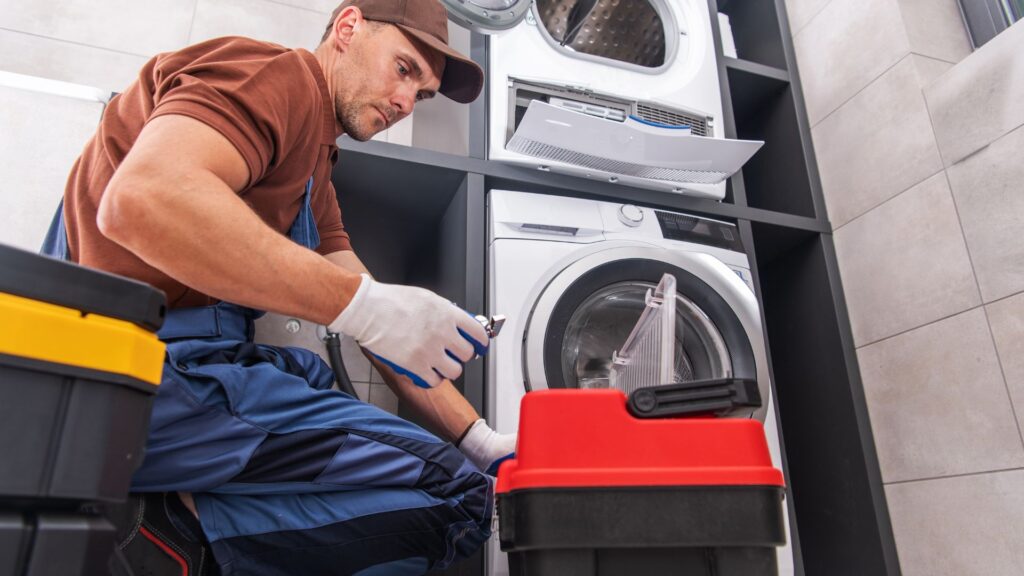
Modern conveniences like dryers have revolutionized our daily routines, allowing us to dry clothes swiftly and effectively. When they malfunction, however, it can seem like a daunting setback. Many dryer issues, with the right knowledge and tools, can be addressed without the immediate need for professional intervention. In this guide, we’ll explore the ins and outs of dryer repair.
Common Issues and Their Symptoms
- Dryer Not Starting: If your dryer doesn’t power on, it may be due to a defective door switch, blown thermal fuse, or even problems with the start switch.
- Dryer Not Heating: If your clothes are taking longer to dry or remain damp, the culprit might be a malfunctioning heating element, broken thermostats, or a faulty thermal fuse.
- Drum Doesn’t Spin: If you can hear the motor running but the drum remains still, it’s likely a broken drive belt or malfunctioning drum rollers.
Essential Tools for the Job
- Screwdrivers: Both Phillips and flat-head.
- Multimeter: To test for continuity in switches and fuses.
- Wrench set: For any nuts or bolts.
- Replacement parts: Specific to your dryer’s make and model.
- Gloves and safety goggles: For protection.
Dryer Repair: Step-by-Step Guide
1. Prioritize Safety
Before attempting any repairs, disconnect the dryer from the power source. If you have a gas dryer, make sure the gas supply is shut off. Always wear gloves and safety goggles.
2. Access the Machine
For most issues, you’ll need to open the dryer’s top or front panel. Depending on your model, this involves removing screws or prying clips. Always refer to your dryer’s manual for specific instructions.
3. Troubleshoot the Issue
- Dryer Not Starting:
- Door Switch: Using your multimeter, test the door switch for continuity. If it’s defective, it will need replacement.
- Thermal Fuse: This safety device can blow if the dryer overheats. Test with a multimeter and replace if it doesn’t show continuity.
- Start Switch: If the dryer doesn’t make any noise when starting, the start switch could be the issue. Test with a multimeter and replace if needed.
- Dryer Not Heating:
- Heating Element: Examine it for signs of wear or damage. If you find any, replace it.
- Thermostats & Thermal Fuse: Use your multimeter to test these components for continuity. If any of them malfunction, they will need replacement.
- Gas Valve Solenoid (for gas dryers): If your gas dryer is not heating up, the gas valve solenoids may be defective. You’ll need to replace them if they show signs of wear.
- Drum Doesn’t Spin:
- Drive Belt: Inspect the belt for signs of wear and tear. A broken belt will need to be replaced.
- Drum Rollers: If the rollers are worn out, the drum will not turn smoothly. Replace any that aren’t spinning freely.
4. Reassemble the Dryer
Once you’ve replaced the necessary components, you can start reassembling your dryer. Make sure to reattach all parts securely. If you took pictures or notes during the disassembly process, now’s the time to refer to them.
5. Test Your Dryer
After everything is in place, reconnect the dryer to its power source (and the gas supply, if applicable). Run a test cycle to ensure it’s functioning correctly.
Preventive Maintenance Tips
To minimize future dryer breakdowns:
- Regularly Clean the Lint Filter: An excessive lint buildup can cause the dryer to overheat, leading to potential damage.
- Inspect and Clean the Venting System: A clogged vent can lead to inefficiency and overheating. Clean it out at least once a year.
- Periodically Check for Wear: Components like belts and rollers wear out over time. By checking them periodically, you can replace them before they break.
While DIY dryer repair can save you a trip from the technician and some money, it’s crucial to be confident in your abilities. If you’re ever in doubt or feel the task is too complex, it’s best to consult with a professional. Taking the initiative to understand and care for your appliances ensures they serve you efficiently for years. Remember always to prioritize safety and refer to your dryer’s manual for specific guidance tailored to your model.
Dryer Repair: A Comprehensive Guide to Restoring Efficiency
The Essential Guide to Dryer Repair
